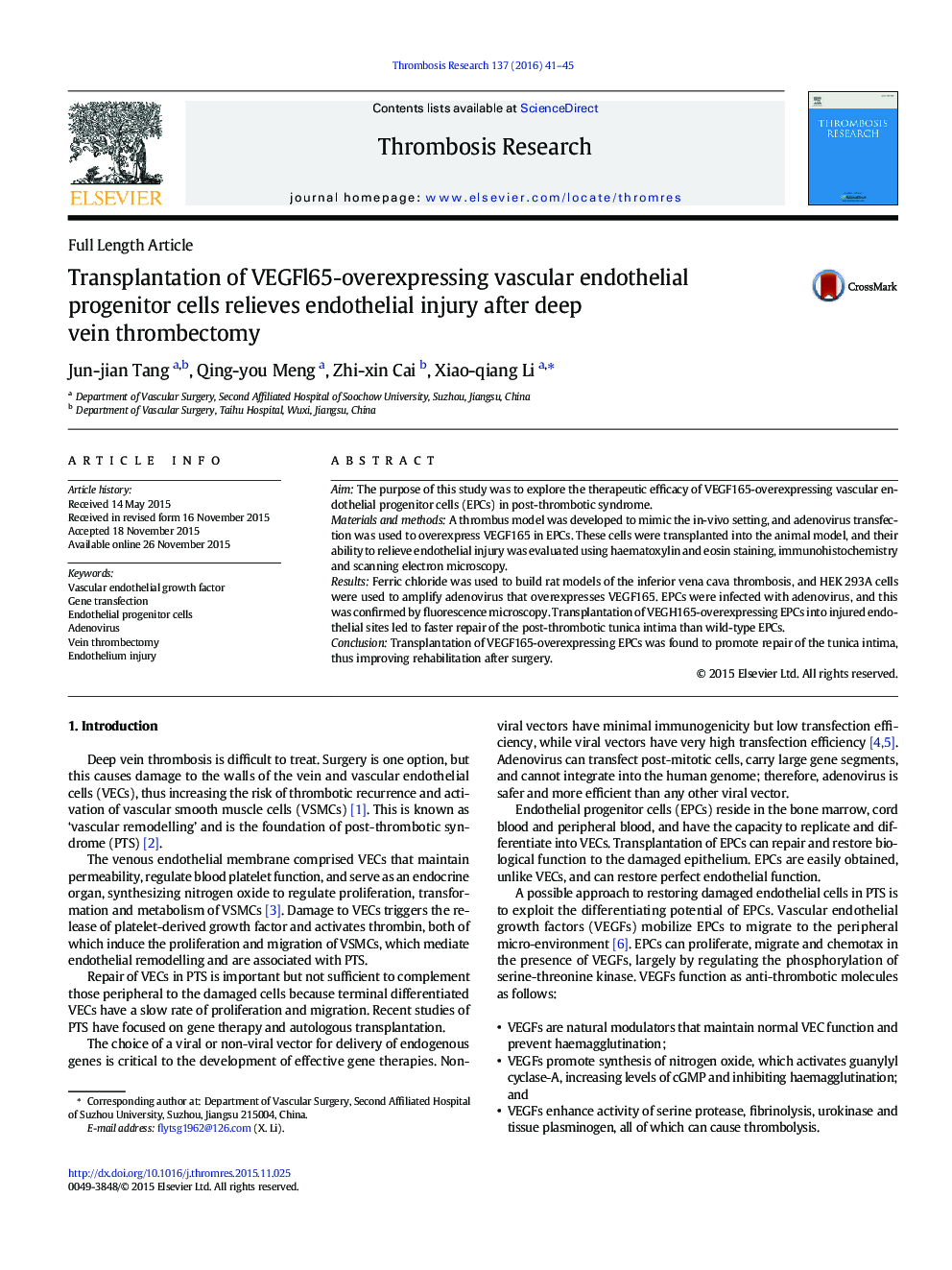| Article ID | Journal | Published Year | Pages | File Type |
|---|---|---|---|---|
| 6000912 | Thrombosis Research | 2016 | 5 Pages |
â¢We establish a good rodent model for thrombosis.â¢We separate and cultivate endothelial progenitor cells (EPCs) in vitro.â¢EPCs can relieve endothelium injury after deep vein thrombectomy.
AimThe purpose of this study was to explore the therapeutic efficacy of VEGF165-overexpressing vascular endothelial progenitor cells (EPCs) in post-thrombotic syndrome.Materials and methodsA thrombus model was developed to mimic the in-vivo setting, and adenovirus transfection was used to overexpress VEGF165 in EPCs. These cells were transplanted into the animal model, and their ability to relieve endothelial injury was evaluated using haematoxylin and eosin staining, immunohistochemistry and scanning electron microscopy.ResultsFerric chloride was used to build rat models of the inferior vena cava thrombosis, and HEK 293A cells were used to amplify adenovirus that overexpresses VEGF165. EPCs were infected with adenovirus, and this was confirmed by fluorescence microscopy. Transplantation of VEGH165-overexpressing EPCs into injured endothelial sites led to faster repair of the post-thrombotic tunica intima than wild-type EPCs.ConclusionTransplantation of VEGF165-overexpressing EPCs was found to promote repair of the tunica intima, thus improving rehabilitation after surgery.
